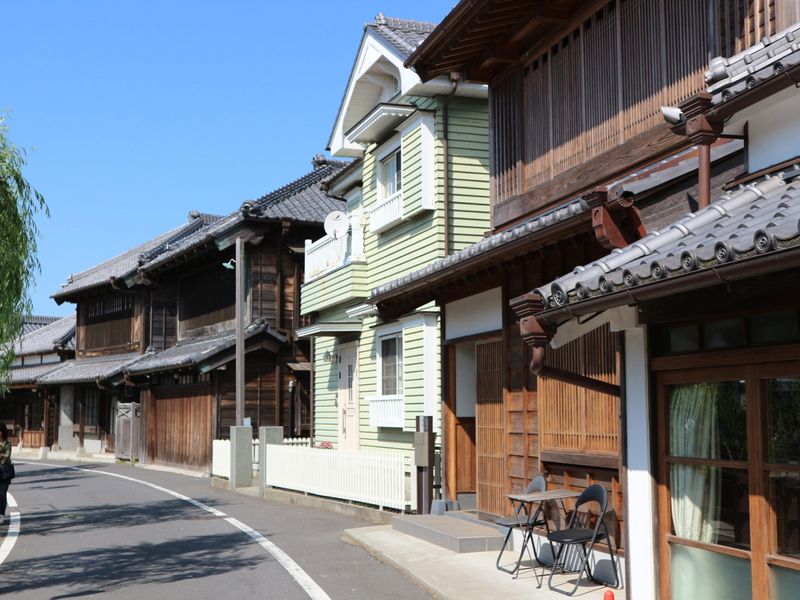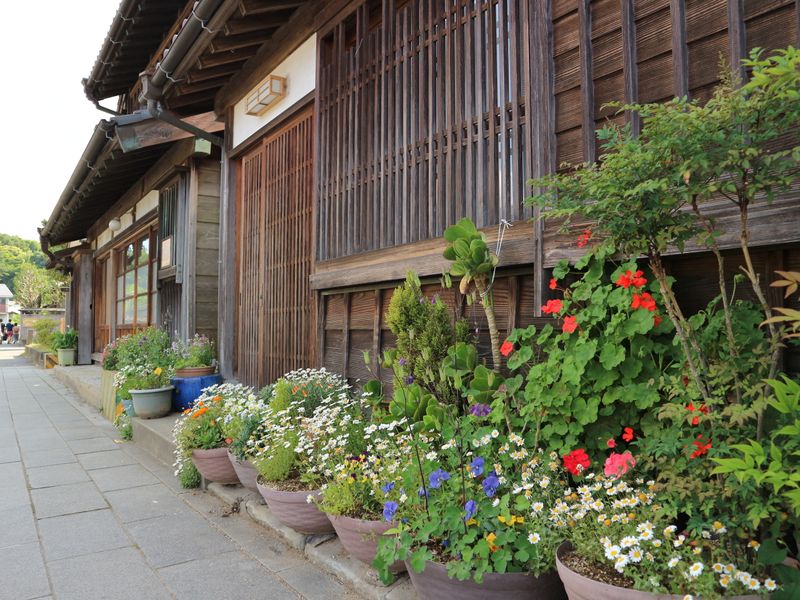May 12, 2018
Sawara town, Chiba: Well-preserved Edo but at what expense?

It’s interesting, to me at least, to ponder how many of us when in, at, or in the vicinity of Narita and Narita International Airport, have actually headed to the immediate north, and not in the direction of Tokyo or a departure lounge.
In fact, is it even a consideration? In our nervous or tearful journeys to Narita to get out of Japan, or in our sweaty and irritable arrivals, do we ever contemplate that land spreads north of Narita, except that, if it does, it might be filled with rice fields and golf courses?
Personally, I hadn’t, so it came as some surprise to learn of the town of Sawara -- a domestic tourist hub of sorts about 30 mins on the train northwest of Narita, perilously close to Chiba’s border with Ibaraki.
The line that takes travelers to Sawara is the JR Narita Line. It’s one of those lines that only picks passengers up once an hour which leads to a kind of “chicken or the egg” conundrum -- do so few people come here because the train service is a pain, or is the train service a pain because there are few people to pick up? Or perhaps I’ve got this all wrong. Perhaps it’s because few people know that Sawara is here, along with the rest of the land immediately north of Narita’s runways.
Maybe I’m wrong on all counts, because the train I’m on is now standing room only, and when we arrive at Sawara’s faux “Edo” station there’s such a frenzy to pick up maps from the little tourist info stand that the partner is left to disconsolately hand me one in English because there are no Japanese versions left.
Sawara, or “Koedo-Sawara” as my map is calling it -- “Little Edo Sawara.” (Is it just me, or does Japan throw out the term “Edo” like it’s the default setting for “old” in this country?)
“I’ve never seen such a charming station.” reads a speech bubble on my map as I’m navigated around town by a couple of girl-next-door types who look like they’ve come straight from an ad shoot for Gap.
There’s truth in the sentiment though. At first glance Koedo-Sawara is enough to charm the pants off -- a collection of historic buildings that line the ever so quaint One River, down which amble tatami-lined boats carrying their tourist cargo. It’s all part of an “Important Preservation District for Groups of Traditional Buildings” and it looks postcard perfect.

On closer inspection though problems arise. One is that these buildings have been so well preserved, and the streets around them so spruced up, that it leaves the layman, like myself, feeling like they’ve stepped into the “Edo zone” of some Disneyland. (I’m not aware that there is such a zone in Tokyo Disneyland, but if there is, I’m pretty sure it looks like this.)
And on reflection, it seems like the approach to preservation has been to keep these buildings out of use. In Sawara, along the banks of the One, you pass impossibly beautiful building one after the other, but you’ve no idea what they are and you can’t peek inside to see what they might once have been. In so many cases they’re shuttered and boarded up, much like the modern homes of Japan’s suburbs, rendering them without soul or signs of life. And it’s a crying shame.

Of course, we should have seen this coming, Japan is clinical in its attempts to keep the outside out and the inside in. Just consider the rigid “no shoes” rules. But for me, this can sometimes frustrate, especially in the case of Sawara.

To be fair, there are one or two buildings here put to the good use of giving visitors a warm, and open, welcome -- an eatery called “Wordsworth” for example. But these are few and far between (not to mention full to the brim during Golden Week).
Personally, I want to see these old and important properties filled with life as much as possible, and to bask in them, rather than have to shuffle past and then go and get a coffee and some sugary bread from a convenience store in the part of town that actually functions as a town.
I’m aware though, that the balance between life-infused and preserved is a tricky one, made more so by that fact that Japan’s old buildings tend to be delicate wooden structures -- a stark contrast to the solid stone durable lumps that are the old, registered, and listed buildings I see back home that, in many cases, are still in service as someone’s home. And I was probably the first in the queue to raise a cynical eyebrow when Starbucks opened a branch in a historical Kyoto structure (as well as being the last in the queue to order a coffee - in so far as I’ve yet to join it).
But I still feel a sense of frustration at places like Sawara, and Japan’s sometimes shuttered and introverted approach. Even more so when I think about how keen this country is to try and extend, push, and promote the spirit of “omotenashi” as it looks to welcome visitors ahead of, and during, the 2020 Tokyo Olympics and Paralympics.
Well, for a start Japan, try lifting up some shutters, drawing back those curtains, and opening up some windows. Let us have a look inside! Otherwise we’ll not see far beyond Tokyo.



1 Comment
Candiajia1
on May 12
@ Tomuu: beautifully written! Very descriptive so much so that it felt like I took the trip with you. Now I want to go visit. Thanks for sharing about such an interesting place.